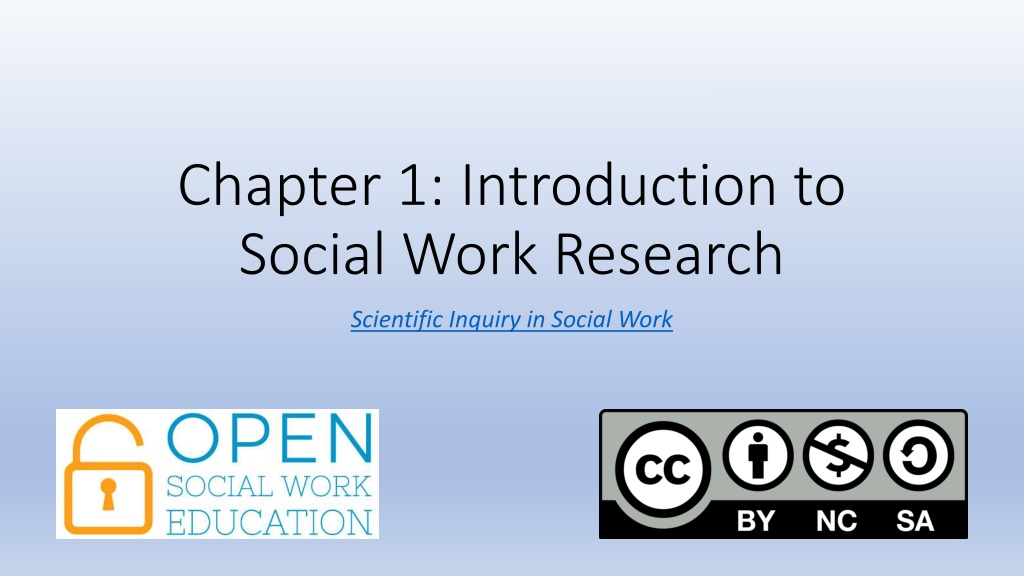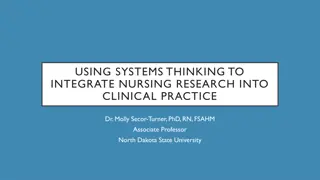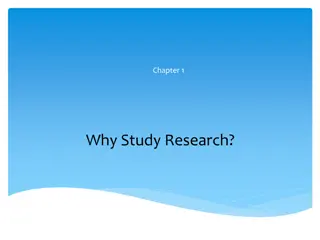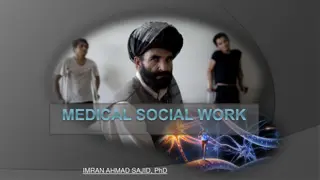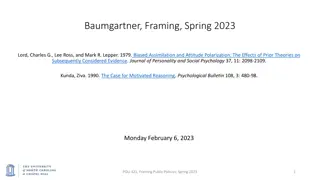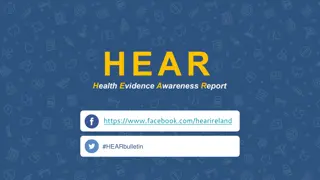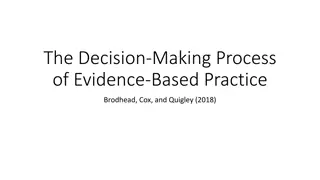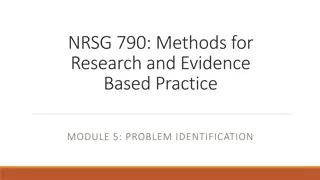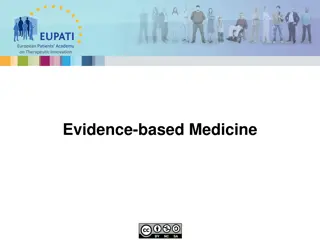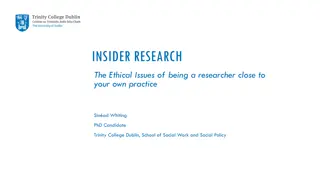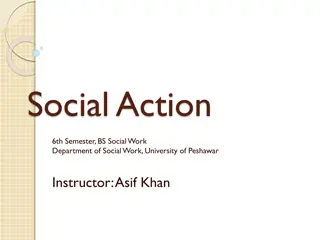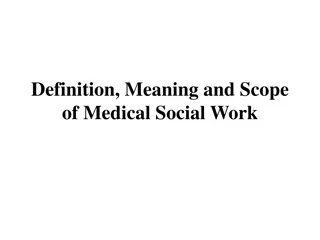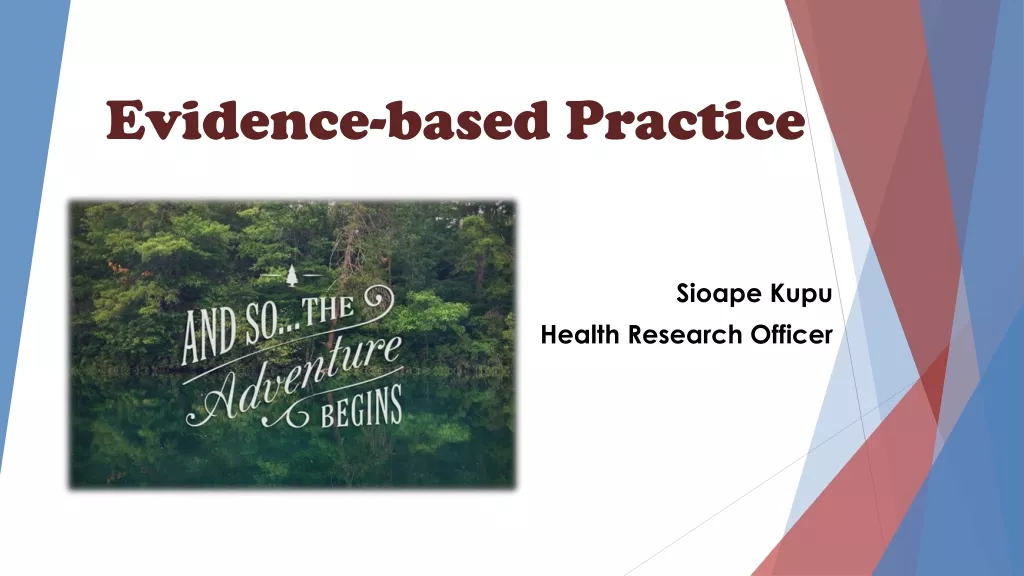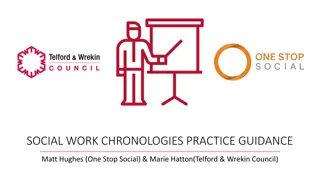Understanding Social Work Research and Evidence-Based Practice
Explore the significance of social work research, cognitive biases, objectivity vs. subjectivity, and evidence-based practice. Learn how social workers gather knowledge, apply cognitive biases, distinguish between subjective and objective truths, and utilize evidence-based practice to enhance client outcomes.
Download Presentation

Please find below an Image/Link to download the presentation.
The content on the website is provided AS IS for your information and personal use only. It may not be sold, licensed, or shared on other websites without obtaining consent from the author. Download presentation by click this link. If you encounter any issues during the download, it is possible that the publisher has removed the file from their server.
E N D
Presentation Transcript
Chapter 1: Introduction to Social Work Research Scientific Inquiry in Social Work
Chapter Overview Chapter Overview The purpose of this chapter is to explain: How we know what we know Connections between science, social science, and social work Why we should care about research in social work
How do social workers know what to do? How do social workers know what to do? Sources of knowledge Intuition Direct experience Practice wisdom Scientific inquiry/research methods Science Cognitive biases Confirmation bias Overgeneralization Selective observation Dunning-Kruger effect 1. How do cognitive biases inform our perception of poverty, people in poverty, and the programs we use to address poverty? 2. How might you apply them to an area of social work you are interested in?
Activity: Avoiding Cognitive Biases Activity: Avoiding Cognitive Biases Go to the site: https://en.wikipedia.org/wiki/List_of_cognitive_biases Select one bias from the list provided. Define it succinctly in your own words (you may need to use other resources to help you understand it) Now apply this bias concept to a social work topic Cite the sources you use if any Be prepared to share it with the class For example Bias example: Bandwagon effect Defined as: Since everyone is using equine therapy for children with autism, it must be a good idea to use it with my client. Bias application: I will use equine therapy with my child welfare clients. Sources: https://en.wikipedia.org/wiki/Equine-assisted_therapy https://www.newportacademy.com/resources/treatment/equine-assisted-therapy/
Objectivity vs. Subjectivity Objectivity vs. Subjectivity Ontology: what is real Epistemology: how we know what is real Objectivity: universal, unbiased truth Quantitative methods: mathematics, statistics, numbers Subjectivity: individual, socially constructed truth(s) Qualitative methods: words, narrative, story Can you provide examples of subjective and objective truths?
Evidence Evidence- -Based Practice (EBP) Based Practice (EBP) Components of EBP: 1. client characteristics 2. practitioner knowledge and resources 3. environmental context What EBP is not: Just doing what the literature says Applying a cookie-cutter approach to practice EBP is (mostly) why you are in this class Social work evidence crisis of the 1960 s Is social work a profession like medicine? Professional ethics requirements Commitment to best practices for our clients and communities
Activity: EBP Case Studies Activity: EBP Case Studies Read Helen Thomas case study at: https://www.pogoe.org/productid/21807 What are the main problems in this case study? What interventions would you suggest for Helen and her daughter? How confident are you that you are doing the right thing? What alternatives are there? What other information do you need, as the practitioner? To select an EBP, where might you go to gather information that fits the client s situation? How would you evaluate the intervention s effectiveness?
Resources for Evidence Resources for Evidence- -based Practice based Practice Cochrane Collaboration http://www.cochrane.org/evidence Campbell Collaboration https://www.campbellcollaboration.org/better-evidence.html National Registry of Evidence-based Programs and Practices (NREPP) https://www.samhsa.gov/nrepp Discontinued by Trump last week Meta-synthesis, meta-analyses, and systematic reviews Journal articles that summarize what the literature says
Key Takeaways from Chapter 1 Key Takeaways from Chapter 1 Social work research occurs on the micro-, meso-, and macro-level. Intuition is a powerful, though woefully incomplete, guide to action in social work. All human thought is subject to cognitive biases. Scientific inquiry reduces cognitive biases by applying an organized, logical way of observing and theorizing about the world. All social workers rely on social science research to engage in competent practice. No one already knows research. It s something to learn through practice. Research is relevant as it allows us to figure out what is known about a topic and what more needs to be studied. If the topic I choose to study is important to me, I will be more interested in research.
